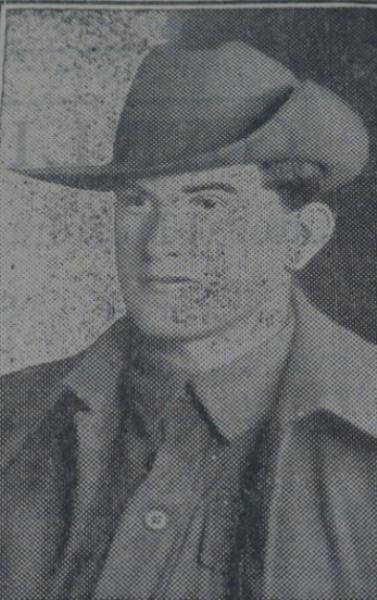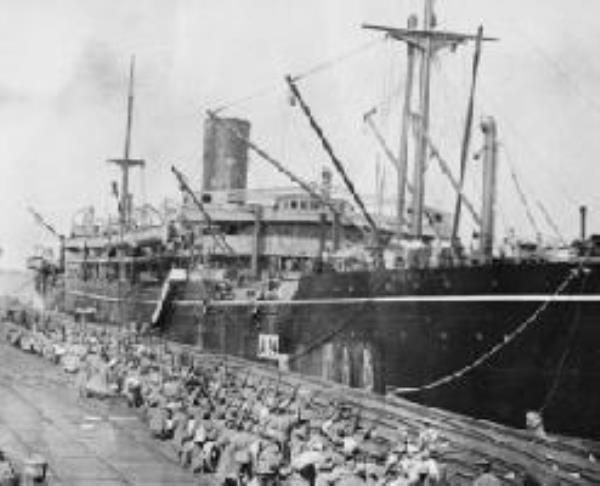
By CHRIS KEYS
IF YOUNG Keysborough farmer Eric Martin had time to take any comfort in the moments before his death from wounds sustained on the blood soaked shores of Gallipoli on 25 April 1915, it was that he was not alone.
Accompanying Eric on his journey to his final resting place had been a band of other keen young lads who had also grown up in and around Dandenong.
The son of William Henry Martin of Bend Road, Keysborough, Eric Douglas Martin was well-known in the district through his work at the Dandenong Post Office.
He joined the postal service at 16 as a telegraph messenger and was later promoted to the position of letter carrier at Malvern Post Post office.
In 1912 Eric resigned from the postal service to join his father on the family’s Keysborough farm.
When war was declared on 4 August Eric, even though he was not yet 21, was among the first to volunteer for the 8th Battalion.
The infantry battalion was raised from rural Victoria by Lieutenant Colonel William Bolton within a fortnight of the declaration of war and embarked just two months later.
Also swept up into the ranks of the 8th Battalion were well-known Dandenong footballers, brothers Allan and Thomas Couve, former Journal printer Harold Tulloch and John Pearson, a 24-year-old grocer from Keysborough.
The boys arrived in Egypt on 2 December 1914.
In a letter written on 13 January 1915, Corporal Tulloch described their camp at Mena, Egypt.
“We have nearly completed our training here and are expecting to be at the Turks on the Suez Canal shortly.
“Tomorrow we go for a long march in full war equipment.
“In another few days we are going to practice an attack under artillery fire.
“The guns will be stationed on a hill in the rear, and firing ball cartridges, we will advance to the attack on trenches lined with dummy men.
“The artillery meanwhile will be pouring in a hot fire, with shells and shrapnel over our heads.
“They will continue firing till it is impossible to fire without injuring us.
“We will conclude the game with a bayonet charge into and over the trenches.
“We had a Merry Xmas on stew, dry bread and sand.“
Three months later on the 5 April 1915 all five men embarked from Alexandria for the Gallipoli campaign.
Only two would survive.
In a letter to his parents Private Pearson described the horror and confusion of the Anzac landing.
“We landed about 7.30am on the 25th April and went straight up the hill, over that, down a deep valley, and half way up another hill, always making straight for the Turks.
“The bullets and shells were landing about us all the time.
“Here we took our packs off, and left them with one man in charge.
“The word came down that reinforcements were needed in front and we doubled up over the brow of the hill with Lieutenant Couve leading.
“My word the fire was hot, the bullets were humming around us like bees, and the shells were bursting everywhere.
“I got separated from our platoon in going over some rough ground, but kept on going forward with some to the 9th Battalion chaps.
“There were no officers to be seen by this time, as they were nearly all wounded, so we could just keep on going as far as we could.
“We got three guns from the Turks (Pom Poms), but we could not advance any further, as the fire was too heavy.
“It was about one PM that I got hit, and laid there for a while, as the shock nearly stunned me, and then I rolled over and started to crawl back.
“Men were dropping everywhere, and I was expecting to get another any minute but I didn’t.
“I crawled down a deep gully then, using my rifle as a crutch I started for the beach; I went a good way and found our doctor and some A.M.C’s; they patched me up, and another chap helped me down to the boats.
“After waiting for a while, we got sent aboard the ship, and arrived here in Alexandria on the Friday about 1pm.
“There are only three out of our tent that I don’t know anything about – Eric Martin and two new chaps – but, you know, they may have been wounded and sent on another boat, or they may be all right and with the company.
“All the rest are wounded, that is out of our tent barring one – and he is at rest, poor chap.
“I now see that Private Eric Martin’s name has, unfortunately, been included among the list of those killed in action.
“The stretcher bearers could not get up near the firing line at all, as half of them were wounded also.
“Any of the wounded that could not get back before our fellows retired back to the hill were murdered by the Turks.
“The place where we landed goes by the name of Sadd-el-Bhair, so if you have a map you will be able to see it for yourself.“
George Pearson was medically discharged and returned to Australia on 3 September 1915.
On 6 May 1915 the Journal carried news of Private Martin’s death.
The newspaper somberly declared that “war was bought right home to residents of this town“ with news of Private Martin’s death.
He was described as having a “generous disposition“ and had “a large circle of friends in this neighbourhood“.
Martin was buried at Victoria Gully about 1000 yards south east of Anzac Cove.
His body was later exhumed and he was reburied at the Lone Pine Cemetery, Gallipoli.
– Chris Keys is president of the Dandenong and District Historical Society








